27 Mar 2012
Our group of 24 women and 8 men left Douala on the 12th of March 2012 for ten days’ visit to Brazil’s cities of Salvador and Rio de Janeiro. The journey from Douala-Paris-Rio de Janeiro-Salvador is 15,500kms long and takes a combined 18 hours in the air. Consider a hypothetical situation in which you took a direct flight from Douala-Rio de Janeiro-Salvador. You will only cover a distance of some 6900 kms! This speaks volumes of the sorry state of communication between Africa and a nearby economic powerhouse like Brazil. In 2012 Brazil overtook Britain to become 6th biggest economy in the world. The distance from Dakar (Senegal) to Douala (3150kms) is the same as that from Dakar to Fortaleza (Brazil).
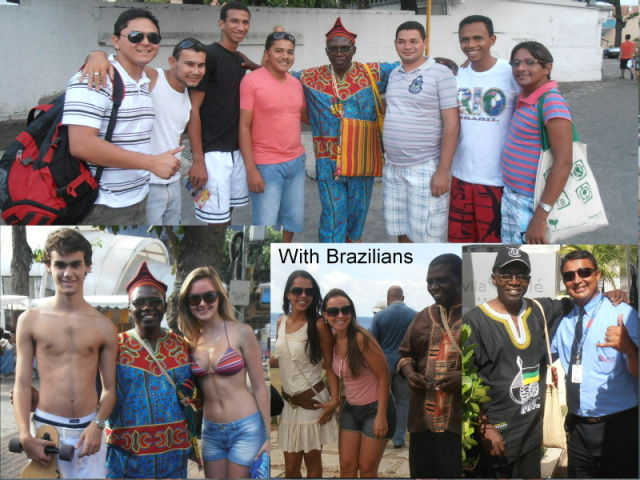
Salvador
We started our visit from the city of Salvador (pop. 3.4m), lying some 1250 kilometers north of Rio de Janeiro. Physical geography divided the city into two with a 70m cliff separating the lower from the upper part. Elevators, winding roads and cable cars link the two sectors of the city. Salvador is Brazil’s 4th largest city and has served as its capital in colonial times. It has 15 forts and we visited the oldest of them called the lighthouse of Barra. Salvador is the most African of Brazil’s cities and is the centre of Afro-Bazilian culture. It was the major hub of trade in African slaves between the 17th and 18th century.
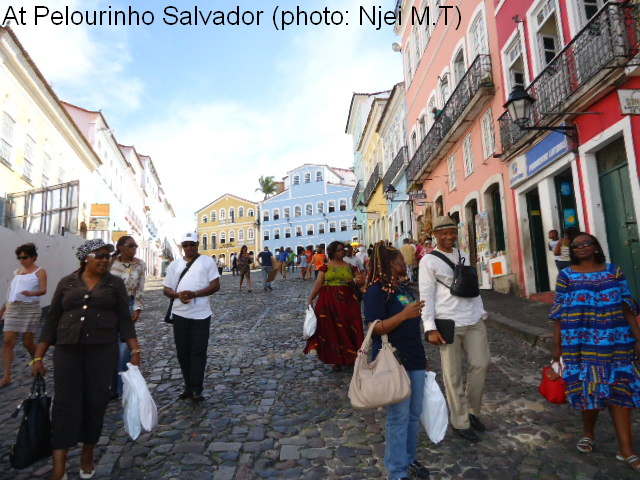
If you want to get the African experience you can have lunch of African dishes at Senac restaurant in Pelourinho, Salvador (at one of the sites that the Michael Jackson 1996 video ‘They don’t care about us’ was shot’. You can get a wide variety of African dishes including ‘akra beans’. Also attend the ‘Bale de Folclorico da Bahia’. It is a musical display reflecting different dances with strong African or more specifically Yoruba roots. We had a chance to visit one of the shrines of Iemanja or Yemanja- Godess of the sea of the Candomble religious sect (less than 1% of Brazilians are adherents). On the issue of religion, some Afro-Brazilians tend to be moving towards the direction of African indigenous religions while Africans on the continent are moving away from it. You can read more on Salvador at this link. http://www.galenfrysinger.com/salvador_bahia_lower.htm
Somehow the Brazilian authorities manage to accommodate the complicated cultural shades of the Brazilian society and tend to accord public holidays for the different religious celebration. The interesting thing is that ordinary Brazilians are very tolerant and tend to join groups of other religious shades in public religious celebrations. Brazilians speak Portuguese and are predominantly Catholics.
We rounded our trip in Salvador by visiting the turtle preservation and research center (Tamar Project) located about two hours by bus from Salvador at a place called Praia do Forte. It is also a very beautiful ecologically protected zone.
Rio de Janeiro
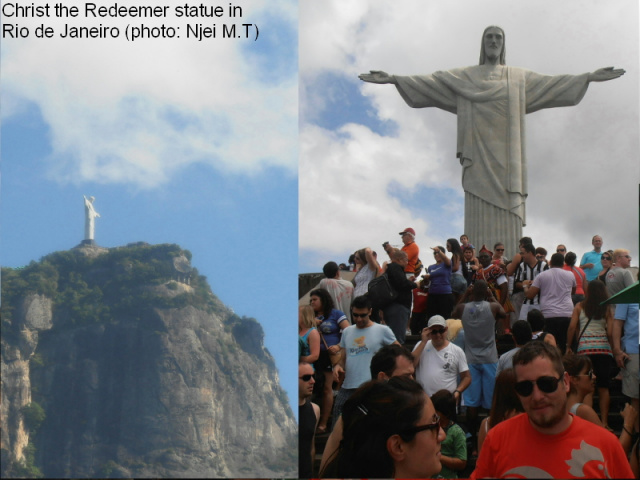
This is undoubtedly one of the most beautiful cities in the world. Of the 5 million tourists that visit Brazil annually, close to two million of them do visit Rio de Janeiro. Brazil has undergone enormous transformation esp. in the last two decades and her cities have been in the forefront of this transformation. Both Rio and Salvador have their peak visitors during the carnival period that usually comes up in February. Rio de Janeiro city (pop 6.3m) is the capital of the state with the same name and is Brazil’s second largest city after Sao Paulo.
Rio has what it takes to make it a magnet for visitors from all over the world
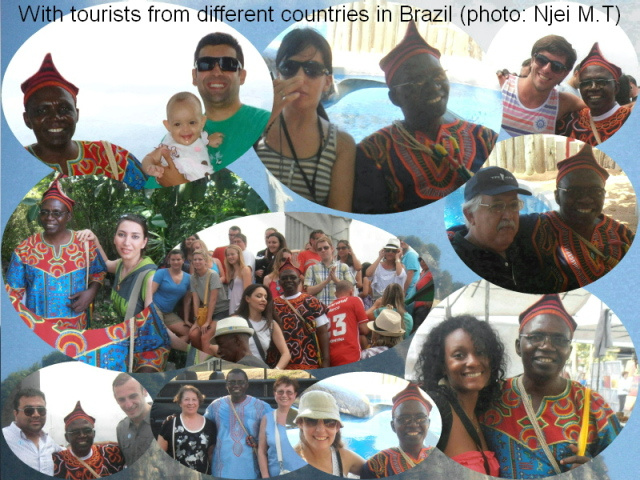
Tropical climate, 50 km beaches along the coast of the state of Rio de Janeiro, urban forest, botanical garden, beautiful fun loving people, efficient transportation (air conditioned buses and taxis and metro) Geography of unique rocky mountains, lagoons and blue water and iconic beaches like Copacabana. We did visit the following of Rio’s famous landmarks. Christ the Redeemer Statue (one of the modern ‘seven wonders of the world’), Sugar loaf, Metropolitan Cathedral, Maracana stadium and many other interesting landmarks. Relevant link http://en.wikipedia.org/wiki/Rio_de_Janeiro
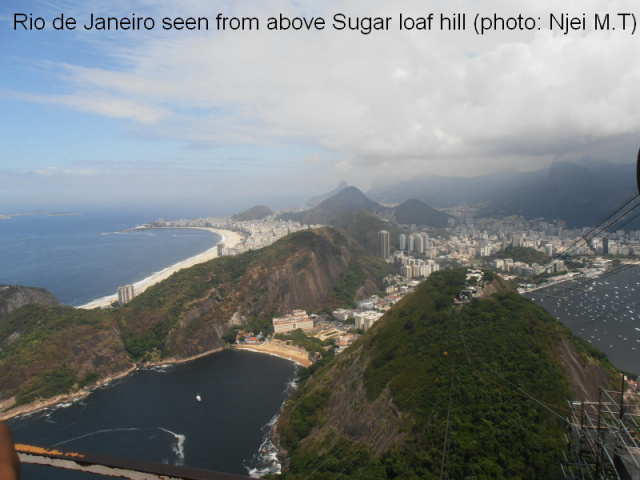
Our trip was made more convenient by the competence and compatibility of our principal guide Moema Brocchini. Her ability to so easily blend into a group like ours and her aptitude at multi-tasking coupled with working hard are her rare assets.
Favelas:
Favelas or shanty towns are typical features of Brazilian cities. The favelas are usually poorly constructed and poorly planned settlements that normally perch precariously on the hillside around many cities. The image of favelas usually presented to the world is that of a stinking crime ridden ghetto with marauding gun trotting gangsters that hold sway over the residents. I did enlist to make a guided tour of Rio city’s largest favela. The Rocinha favela (pop 200,000) is situated in the southern zone of the city adjacent to the affluent neighborhood of Gavea. We made a foot trip into the favela and navigated our way through its narrow alleys. We met some residents and joked with them. It was obvious to me that notwithstanding their relative poverty, residents of the favelas are doing everything to maintain an acceptable level of hygiene and orderliness. You can easily deduce that these are people who are conscious of their situation and are determined to work their way out of poverty.
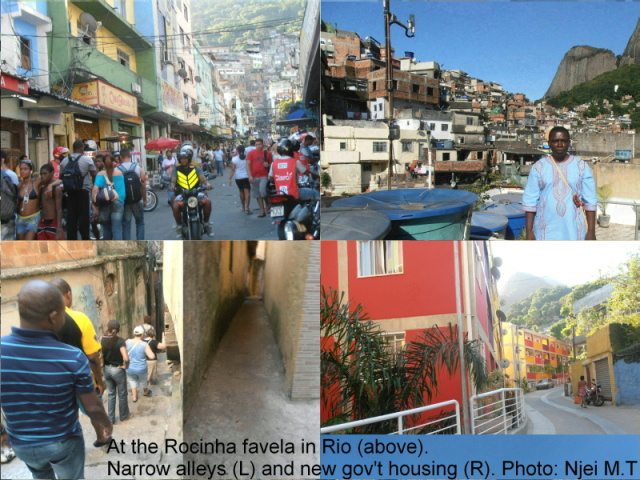
Firsthand account from people who have spent time in the favelas speak of a community in which people know each other and share with each other. Yes favelas have higher crime rates, and more promiscuity but this is to be expected from this type of community. There are mostly people from the favelas that perform domestic chores for middle class Brazilians but many of these middle class Brazilians know little about the reality of life in the favelas apart from the stereotype and mostly misleading information fed to them by news outlets and movies.
If you are a visitor to Rio , your stay will not be complete if you do not have a taste of what transpires during the annual carnival parade. You can enjoy your own mini carnival by attending a show at Plataforma.
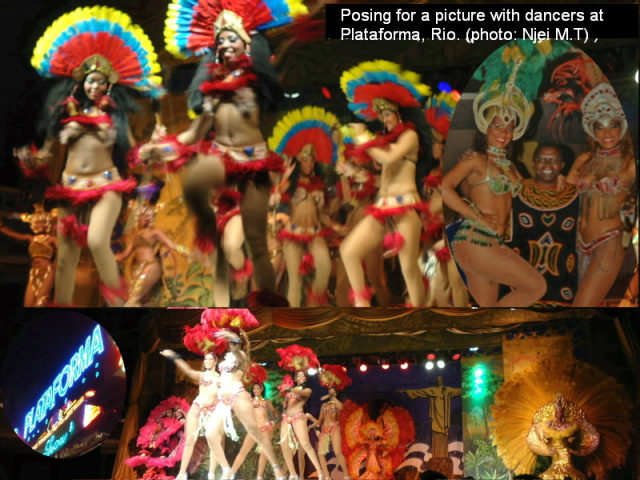
We left Rio de Jaineiro in the evening of March 22 and arrived Paris on the 23rd to attend the annual French pharmaceutical trade fair (Pharmagora) that took place on the 24th, 25th and 26th March. I returned to Cameroon on the 27th with nice memories of a country that I will recommend it to potential visitors.
View more photos at this link
http://www.flickr.com/photos/njei_timah/sets/72157594318093939/
Link to other Travel/Nature articles
http://www.njeitimah-outlook.com/page/page/2076041.htm
Special thanks to UBIPHARM Cameroon for the logistical organization of the tour
Njei Moses Timah
|